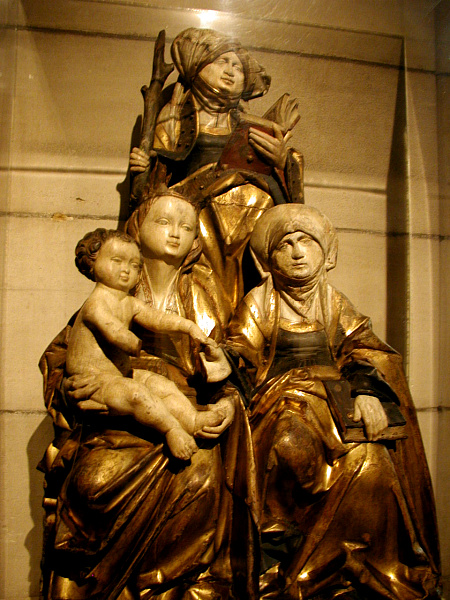Seventy seven years before the birth of Christ, a pious maiden, quite well off and remarkably beautiful, was in the habit of visiting, with her parents' permission, the sons of prophets on Mount Carmel. She was disinclined to marriage, until one of the Carmelites had a prophetic dream, they saw a root from which grew two trees, one had three branches, all bearing flowers, but one a flower more pure and fragrant than all the rest ... Then a voice was heard saying: "This root is our Emerentia, destined to have great descendants."1The first tree refers to Anne, who would have three daughters, the purest of whom would be the mother of Jesus.2
In the sculpture at right, Emerentia stands behind the figures of Anne, Mary, and the Child Jesus. She is identified by the inscription (spelled "Emerantia") at the base of the sculpture. According to Nixon (152), this variation on the Anna Selbdritt is properly called an Anna Selbviert or Emerentia Selbviert.
Prepared in 2014 by Richard Stracke, Emeritus Professor of English, Augusta University, revised 2015-10-30.

The Urban Master of Hildesheim, Virgin, Child, St. Anne, and Emerentia, 1515-30 (See the description page)
ALSO SEE
NOTES
1 Moss, 188, quoting from Ludolph of Saxony, Vita Iesu Christi (Paris, 1502 – Ludolph's volume and page number not provided).
2 Moss, ibid.